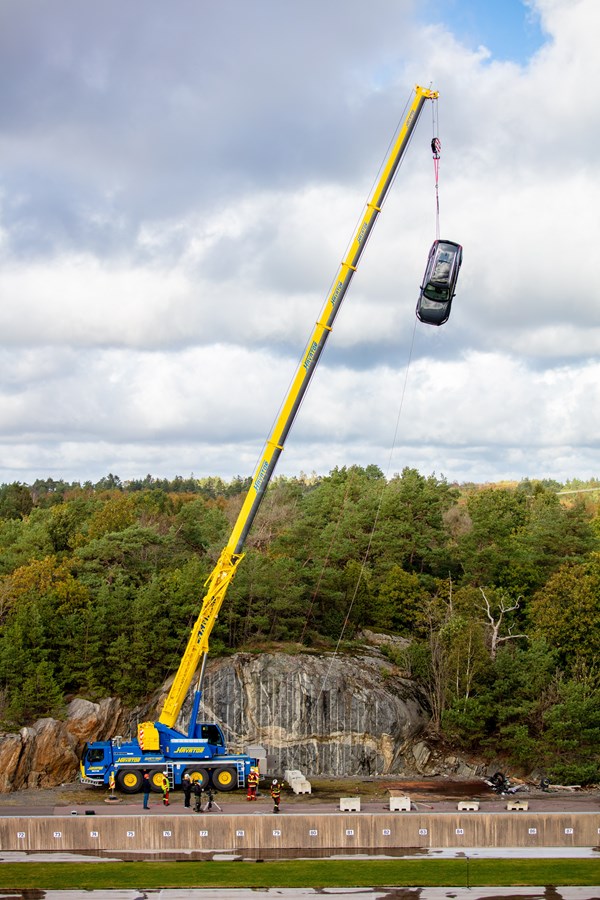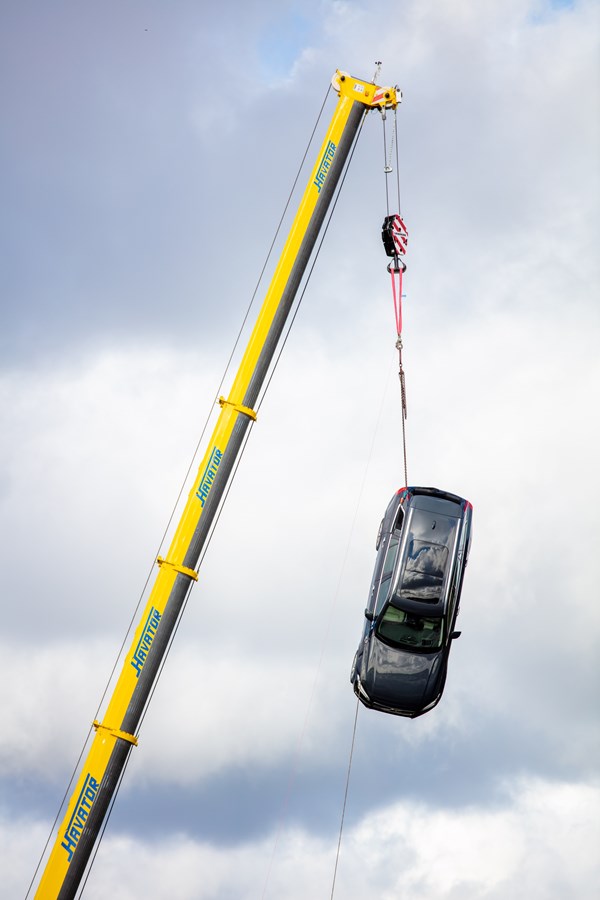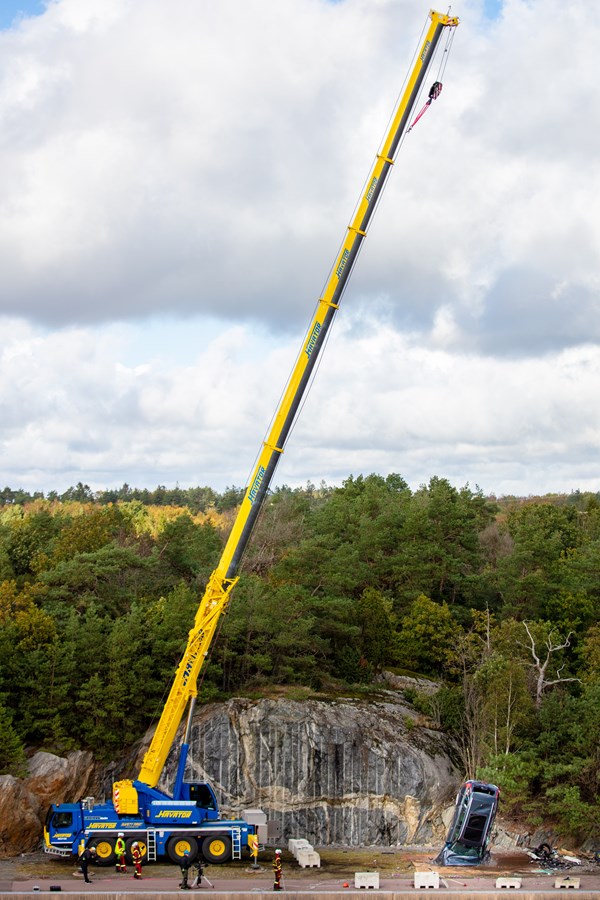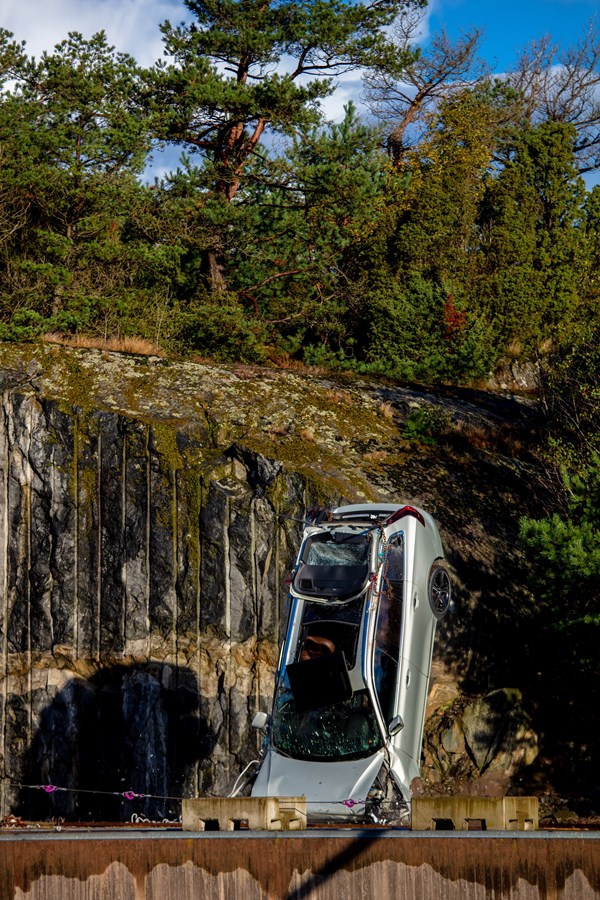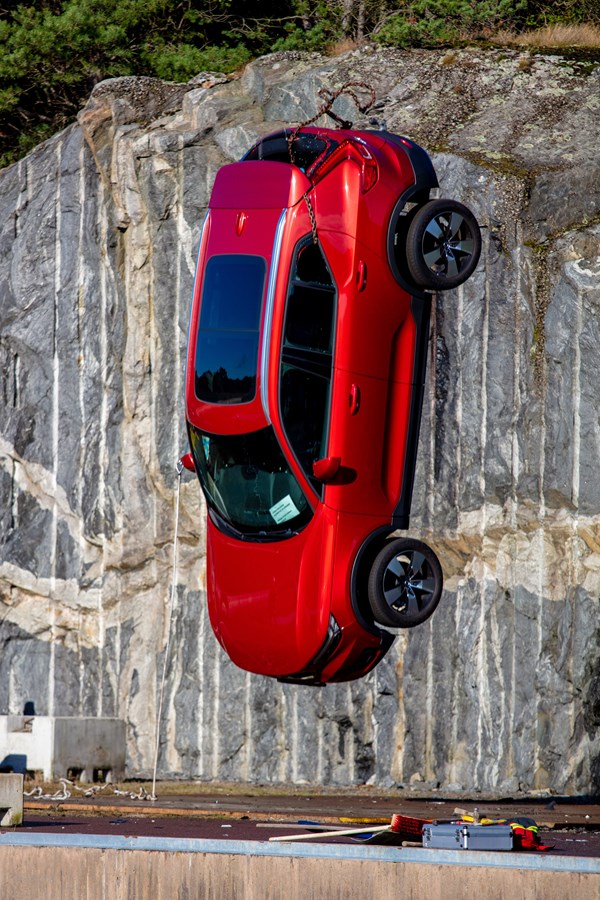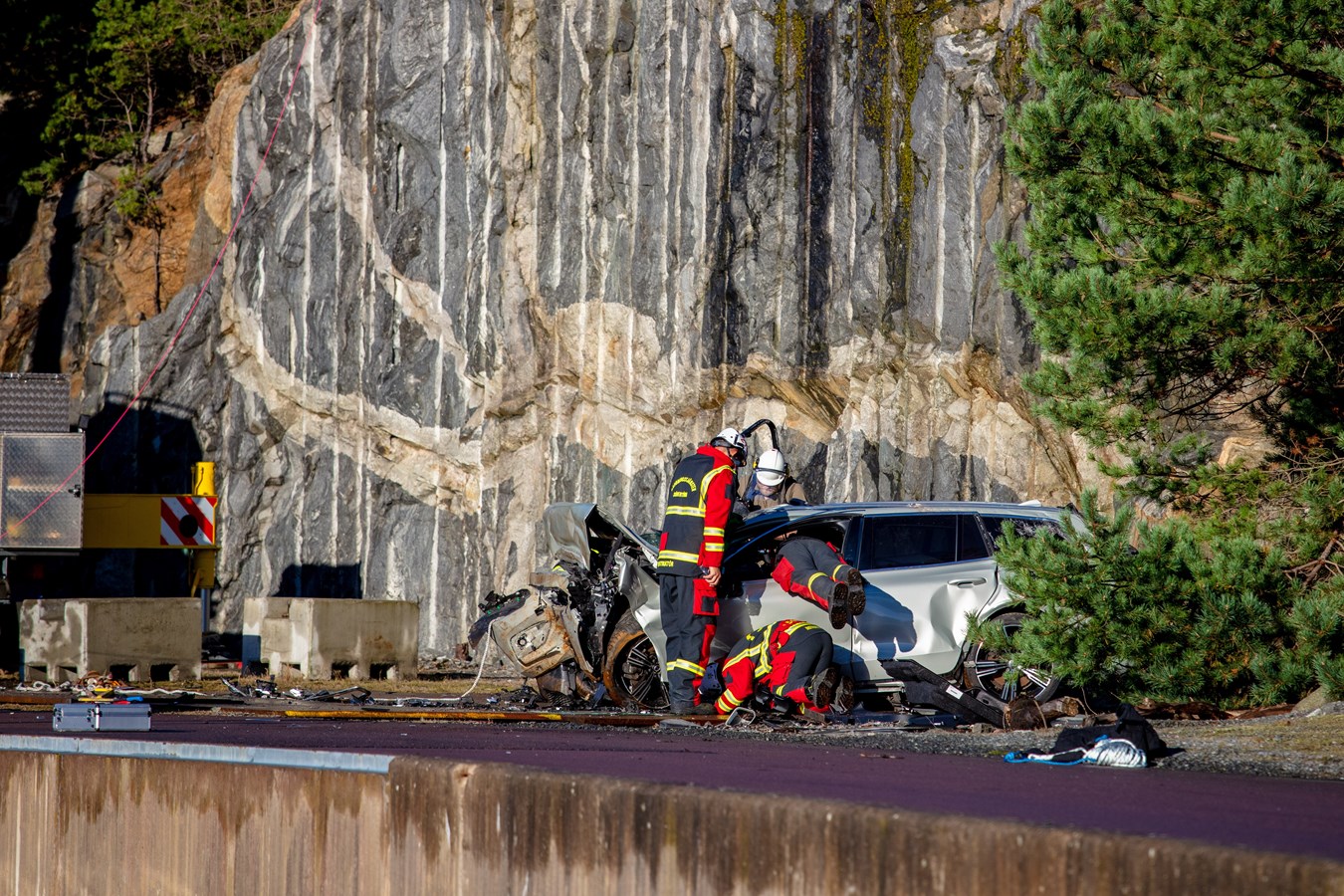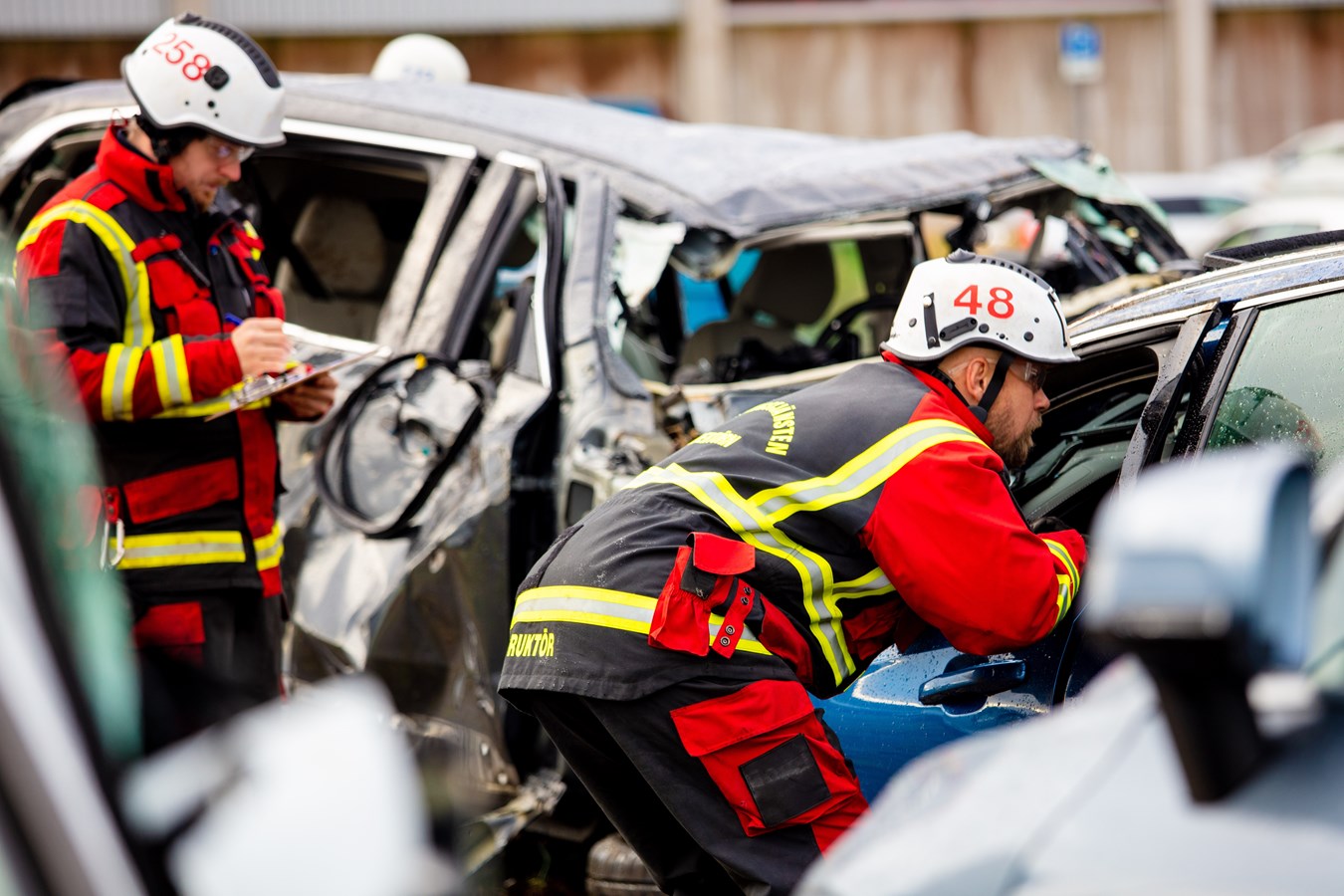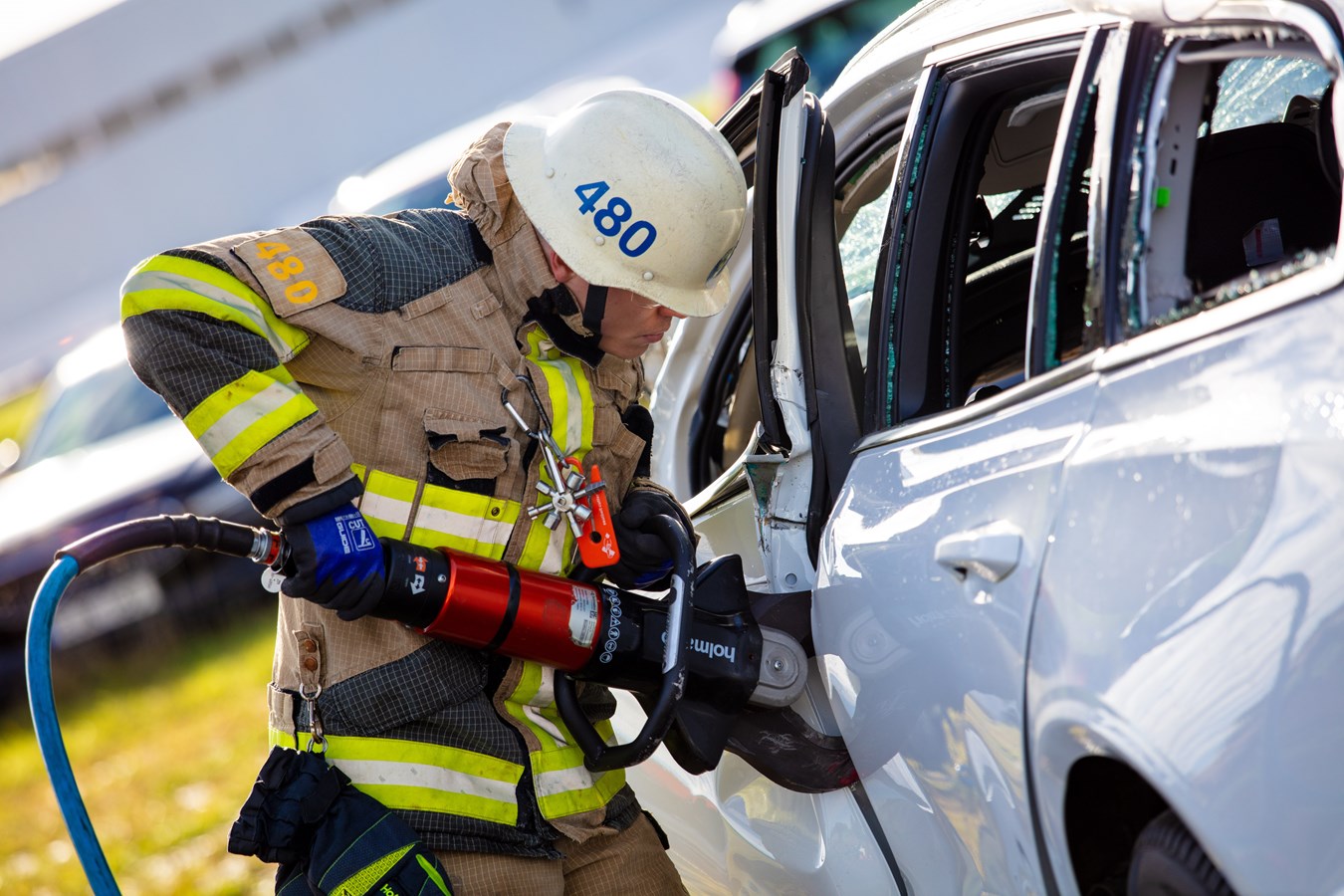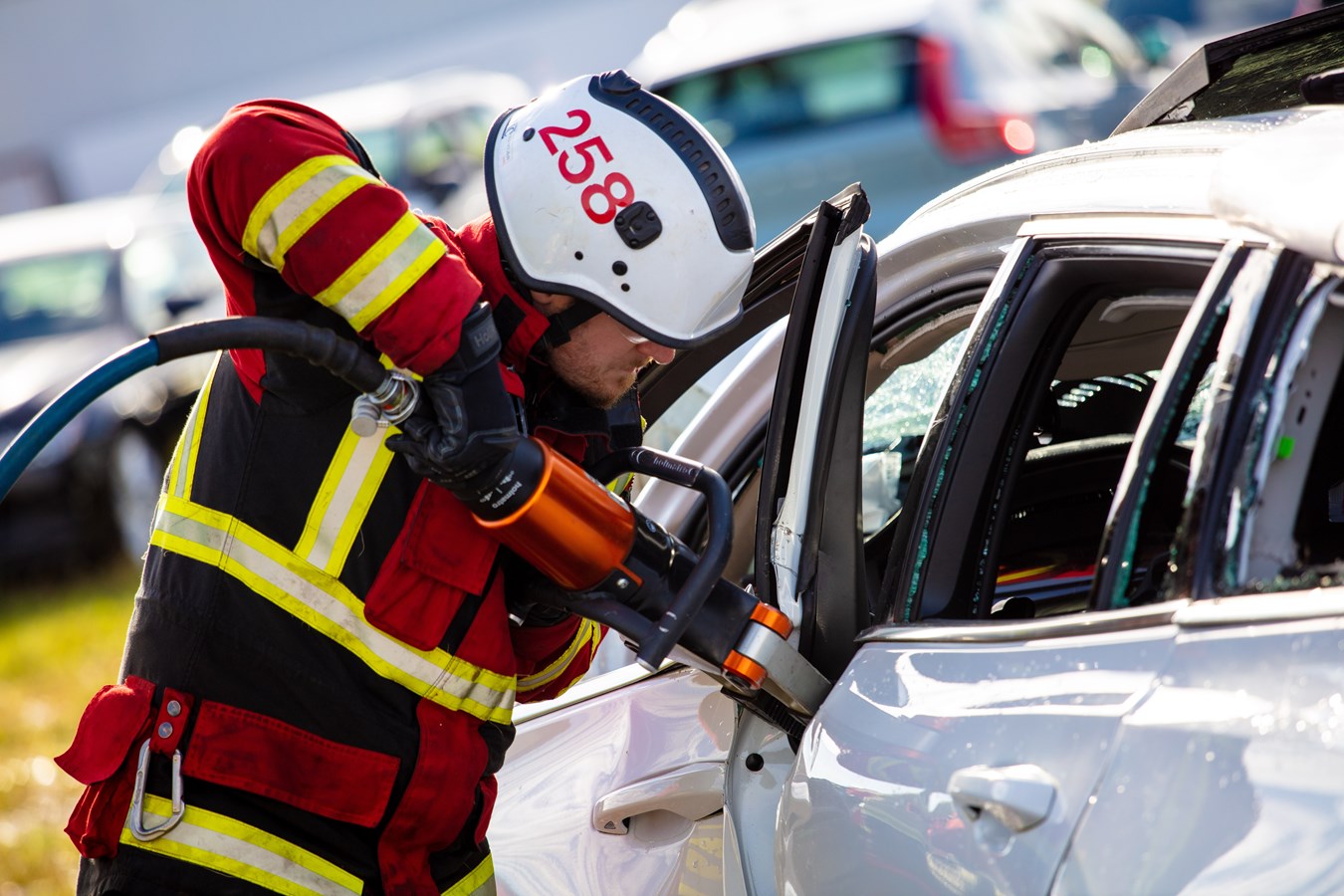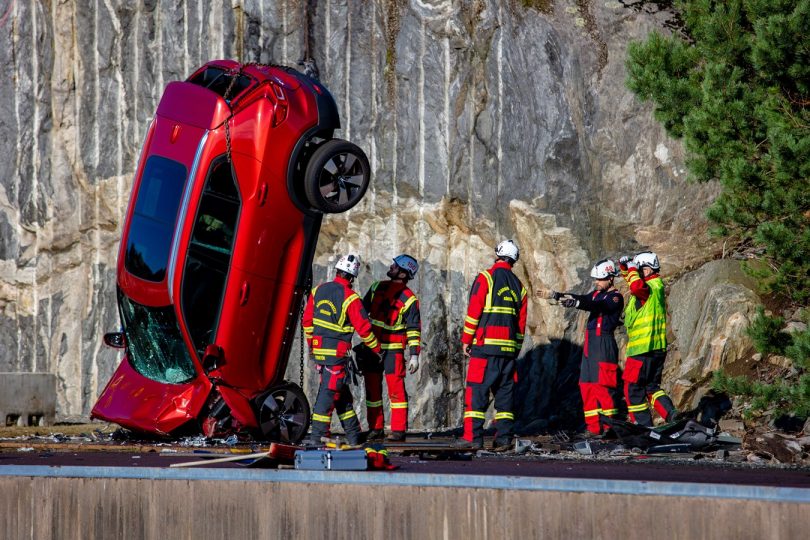Swedish car manufacturer Volvo is renowned for pioneering innovative safety technologies in the car industry from the basic three-point seatbelt which is now a benchmark for all vehicles worldwide to rearward-facing child seats and advanced tech such as blind-spot detection system.
Volvo has now dropped multiple Volvo Cars from a height of 30 metres using a crane to simulate crash testing beyond the standard crash-testing methods such as frontal collision against rigid barriers, front offset deformable barrier, Side collision with moving barriers, bumper test, static pole test etc. that are used in conventional testing, rating and reporting programs around the world.
The drop test performed from a height of 30 meters boasts itself to be one of the most extreme crash-test ever carried out by Volvo Cars. The intention of the crash test is not to test the integrity of the vehicle but to allow rescue services to prepare themselves for the worst-case scenario. The drop test simulates forces that erupt in the most violent of road crashes that are not possible to safely replicate in an indoor environment. This allows extrication specialists to hone their lifesaving skills by using these crashed Volvo Cars as testbeds.
The motive of the crash is to simulate an extremely high-speed single-car crashing into a truck or other obstacles on the road damaging itself from multiple sides. The rescue workers then simulate the extrication of the occupant in a safe manner by using specialist tools. In such conditions, the occupants are likely to be in a critical condition and hence it is important for the extrication specialists to get people out of the car and move them to a hospital as quickly as possible, to which rescue workers often refer to as the Golden Hour. The rescue workers use special hydraulically operated tools known in the industry as ‘jaws of life’ to release the occupant from the crashed vehicle.
Ordinarily, rescue workers use cars from the scrapyard to practice extrication techniques and keep their skills sharp, but the cars which are 15 to 20 years old are constructed of milder steel strength than today. The overall safety cage construction and durability also has a huge difference as the safety aspects in the car industry has evolved multiple folds since the last decade. Volvo Cars are made of some of the hardest steel found in modern cars and allow the rescue experts to update their skills and develop new extrication techniques.
Volvo Cars have drop-tested ten different models several times from the crane. Before the drop was conducted safety engineers made exact calculations of how much force and pressure each car needed to be exposed to, to achieve the desired level of damage. Volvo Cars have also announced that all the findings from the crashes and the resulting extrication work will be collected in a research report that will be available free of use to rescue workers, elsewhere to further benefit live-saving skills and capabilities.
